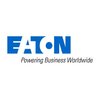Filter interviews by
Nakoda Ispat Ltd. Power Plant Siltara Phase 2 Safety Assistant Interview Questions and Answers
Nakoda Ispat Ltd. Power Plant Siltara Phase 2 Safety Assistant Interview Experiences
1 interview found
I applied via Naukri.com and was interviewed in Nov 2022. There were 2 interview rounds.

(2 Questions)
- Q1. What is safety induction
- Ans.
Safety induction is a process of introducing new employees to the safety policies and procedures of an organization.
It is a mandatory training for all new employees before they start working.
It covers topics such as emergency procedures, hazard identification, and reporting.
It helps to ensure that employees are aware of the potential risks and how to prevent accidents.
Examples of safety induction include showing new em...
- Q2. What safety is permit book
- Ans.
A safety permit book is a document that outlines the safety procedures and protocols for a particular job or task.
It contains information on potential hazards and how to mitigate them
It outlines the personal protective equipment (PPE) required for the job
It may include emergency procedures and contact information
It is often required by regulatory agencies for certain industries, such as construction or manufacturing
Exa...
Interview Preparation Tips
Top trending discussions






Interview questions from similar companies

(2 Questions)
- Q1. What is jsa with hazard
- Q2. What is risk
Interview Preparation Tips

(2 Questions)
- Q1. Hira and accident
- Q2. Unsafe act and ausafe condition
(2 Questions)
- Q1. CPR training and iso
- Q2. Mis report and iso standard

I applied via Campus Placement and was interviewed in Aug 2024. There were 3 interview rounds.
Reasoning and numerical
(2 Questions)
- Q1. Tell me about your self
- Ans.
Experienced safety officer with a background in industrial safety protocols and risk management.
Over 5 years of experience in implementing safety procedures in industrial settings
Proficient in conducting safety audits and inspections
Skilled in developing and delivering safety training programs for employees
Strong knowledge of OSHA regulations and compliance standards
- Q2. What is your strength
- Ans.
My strength lies in my attention to detail and ability to identify potential safety hazards before they become a problem.
Strong attention to detail
Proactive in identifying safety hazards
Effective communication skills to address safety concerns
Ability to implement safety protocols and procedures
Experience in conducting safety inspections and audits
(2 Questions)
- Q1. What do you mean by Fire?
- Ans.
Fire is a rapid chemical reaction that releases heat, light, and various gases.
Fire is a result of the combustion process, where a fuel source combines with oxygen in the presence of heat to produce flames.
It requires three elements to sustain: fuel, oxygen, and heat.
Examples of fuel sources include wood, paper, gasoline, and natural gas.
Fire can be classified based on its fuel source, such as Class A (ordinary combust...
- Q2. What do you mean by safety
- Ans.
Safety refers to the measures taken to prevent accidents, injuries, and hazards in the workplace or any environment.
Safety involves identifying and assessing risks to prevent harm to individuals or property
It includes implementing safety protocols, procedures, and training to mitigate risks
Regular inspections and audits are conducted to ensure compliance with safety standards
Emergency preparedness and response plans ar...

(6 Questions)
- Q1. What is Safety rules
- Ans.
Safety rules are guidelines and procedures put in place to prevent accidents and injuries in the workplace.
Safety rules are established to ensure the well-being of employees and prevent hazards.
They include wearing appropriate personal protective equipment (PPE), following proper procedures for handling hazardous materials, and maintaining a clean and organized work environment.
Examples of safety rules include wearing ...
- Q2. What is the safety
- Ans.
Safety is the state of being free from harm or danger.
Safety involves identifying and mitigating potential hazards in the workplace.
It includes implementing safety protocols and procedures to prevent accidents and injuries.
Regular safety inspections and training are essential to maintain a safe work environment.
Emergency preparedness and response plans should be in place to address any unforeseen incidents.
- Q3. What is the Environment
- Ans.
The environment refers to the surroundings in which an organism, person, or community lives and operates.
Includes physical, chemical, biological, and social factors
Can impact health, safety, and well-being
Examples: air quality, water quality, noise levels, temperature
- Q4. What is the hazard
- Ans.
The hazard is a potential source of harm or danger that could cause injury or damage.
Identify and assess potential hazards in the workplace
Implement control measures to minimize or eliminate hazards
Train employees on how to recognize and respond to hazards
Regularly review and update hazard assessments
- Q5. What is the risk
- Ans.
The risk refers to the potential for harm, injury, or loss that may result from a specific hazard or situation.
Risk is inherent in all activities and can be managed through proper safety measures.
Identifying and assessing risks is crucial in developing effective safety protocols.
Examples of risks in a workplace setting include slips, trips, falls, exposure to hazardous chemicals, and machinery accidents.
- Q6. What is the democracy
- Ans.
Democracy is a form of government where power is vested in the people and exercised by them directly or through elected representatives.
Democracy allows citizens to participate in decision-making processes
It promotes equality and protects individual rights
Examples include the United States, United Kingdom, and India

(2 Questions)
- Q1. Legal documents
- Q2. Role and responsibilities
Role and responsibilities

(2 Questions)
- Q1. Tell me about yourself
- Q2. What is the role and responsibilities
Interview Preparation Tips

(2 Questions)
- Q1. What is your favorite food
- Q2. Non veg all items


Aptitude test, reasoning test and English test
And technical
(4 Questions)
- Q1. Technical questions
- Q2. What is your role and responsibilities
- Ans.
The role of a Safety Officer is to ensure the safety and well-being of individuals in a workplace or environment.
Develop and implement safety policies and procedures
Conduct regular safety inspections and audits
Identify and assess potential hazards and risks
Train employees on safety protocols and emergency procedures
Investigate accidents and incidents, and provide recommendations for prevention
Maintain safety records an...
- Q3. What is PTW & type ofPTW
- Ans.
PTW stands for Permit to Work. It is a formal written system used to control high-risk activities in the workplace.
PTW is a document that outlines the work to be done, the hazards involved, and the necessary precautions.
It ensures that proper authorization and safety measures are in place before starting any high-risk task.
Different types of PTW include Hot Work Permit, Confined Space Entry Permit, Electrical Work Perm...
- Q4. Isolation and it's process
- Ans.
Isolation is the process of separating hazardous energy sources to protect workers from potential harm.
Isolation involves identifying and controlling energy sources.
The process includes de-energizing equipment, locking and tagging out energy sources, and verifying isolation.
Examples of isolation methods include electrical lockout/tagout, valve lockout/tagout, and confined space isolation.
Isolation procedures should be ...
Interview Preparation Tips


HIRA all activity and topics discussed.
(2 Questions)
- Q1. What is risk and what is Safety program
- Ans.
Risk is the potential for harm or loss, while a Safety program is a set of procedures and measures to prevent accidents and injuries.
Risk is the likelihood of a negative event occurring, such as an accident, injury, or financial loss
Safety program includes policies, procedures, training, and equipment to minimize risks and promote a safe work environment
Examples of safety programs include regular safety training for em...
- Q2. What is scaffolding.
- Ans.
Scaffolding is a temporary structure used to support workers and materials during construction or maintenance.
Scaffolding provides a safe working platform at elevated heights.
It is typically made of metal or wood and consists of platforms, braces, and guardrails.
Examples include tube and coupler scaffolding, frame scaffolding, and suspended scaffolding.
Interview Preparation Tips
Nakoda Ispat Ltd. Power Plant Siltara Phase 2 Interview FAQs
Tell us how to improve this page.
Interview Questions for Popular Designations
- Safety Engineer Interview Questions
- Safety Manager Interview Questions
- Safety Officer Interview Questions
- Fire & Safety Officer Interview Questions
- Senior Safety Officer Interview Questions
- Safety Supervisor Interview Questions
- Fire & Safety Supervisor Interview Questions
- Senior Safety Engineer Interview Questions
- Show more
Interview Questions from Similar Companies
Nakoda Ispat Ltd. Power Plant Siltara Phase 2 Safety Assistant Reviews and Ratings
based on 1 review
Rating in categories
|
Shift Incharge
5
salaries
| ₹3.5 L/yr - ₹4.5 L/yr |
|
Assistant Engineer
4
salaries
| ₹2.5 L/yr - ₹3 L/yr |
|
Electrical Engineer
3
salaries
| ₹2.8 L/yr - ₹2.8 L/yr |
|
Junior Engineer
3
salaries
| ₹1.2 L/yr - ₹2 L/yr |
|
Maintenance Supervisor
3
salaries
| ₹2.4 L/yr - ₹2.4 L/yr |

Suzlon Group

Adani Power

Adani Group

NTPC
- Home >
- Interviews >
- Nakoda Ispat Ltd. Power Plant Siltara Phase 2 Interview Questions >
- Nakoda Ispat Ltd. Power Plant Siltara Phase 2 Safety Assistant Interview Questions








